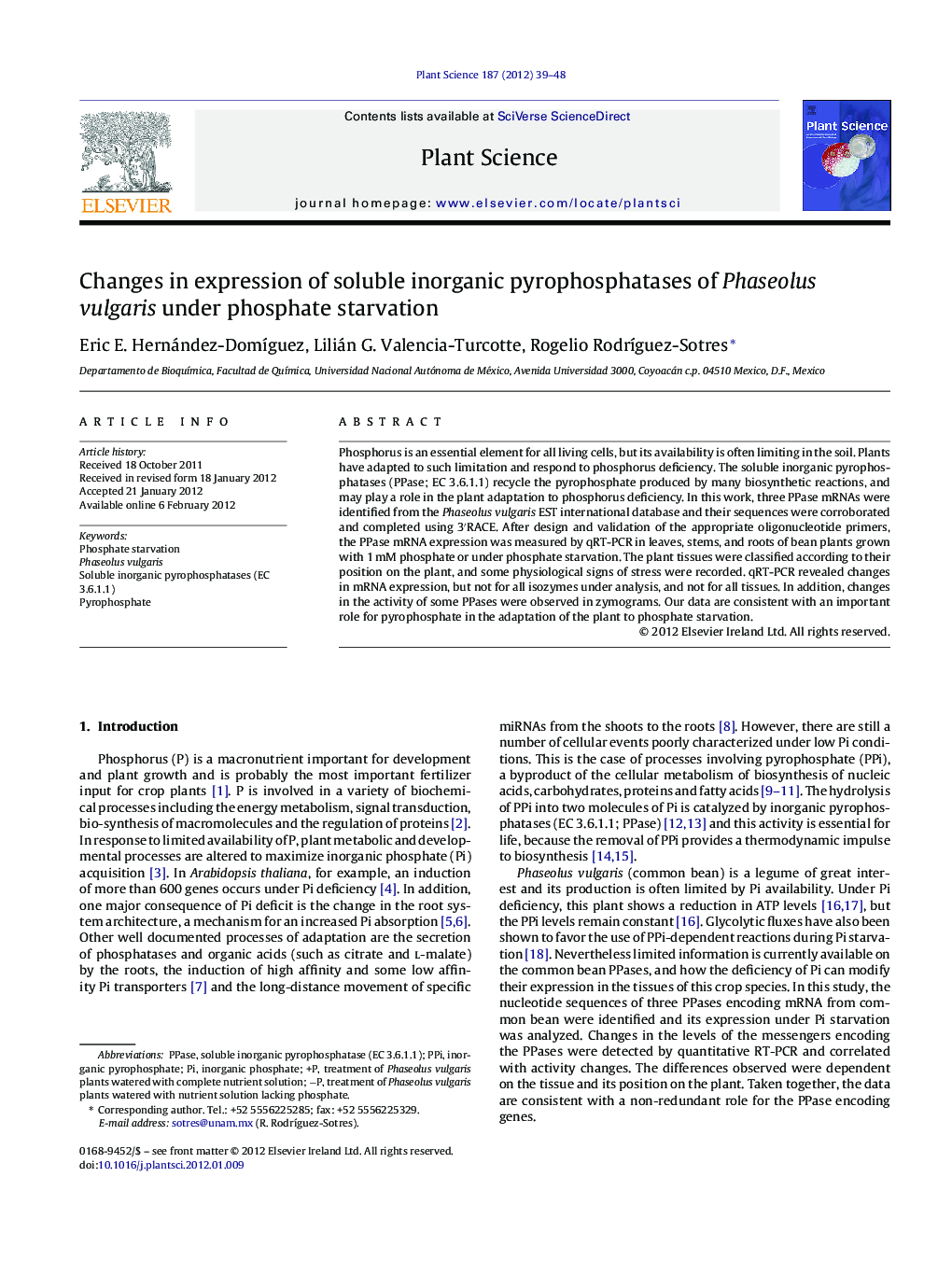| Article ID | Journal | Published Year | Pages | File Type |
|---|---|---|---|---|
| 2017403 | Plant Science | 2012 | 10 Pages |
Phosphorus is an essential element for all living cells, but its availability is often limiting in the soil. Plants have adapted to such limitation and respond to phosphorus deficiency. The soluble inorganic pyrophosphatases (PPase; EC 3.6.1.1) recycle the pyrophosphate produced by many biosynthetic reactions, and may play a role in the plant adaptation to phosphorus deficiency. In this work, three PPase mRNAs were identified from the Phaseolus vulgaris EST international database and their sequences were corroborated and completed using 3′RACE. After design and validation of the appropriate oligonucleotide primers, the PPase mRNA expression was measured by qRT-PCR in leaves, stems, and roots of bean plants grown with 1 mM phosphate or under phosphate starvation. The plant tissues were classified according to their position on the plant, and some physiological signs of stress were recorded. qRT-PCR revealed changes in mRNA expression, but not for all isozymes under analysis, and not for all tissues. In addition, changes in the activity of some PPases were observed in zymograms. Our data are consistent with an important role for pyrophosphate in the adaptation of the plant to phosphate starvation.
► Three sequences encoding putative inorganic pyrophosphatases were identified in Phaseolus vulgaris. ► Changes in its expression were observed in several tissues under phosphate starvation conditions. ► Changes in activity were also observed in zymograms. ► P-deficiency responsive genes and physiological signs of stress were used to monitor the plant response.
